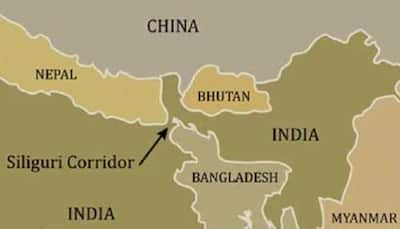New Delhi: India has fortified its most vulnerable but strategically important stretch, the Siliguri Corridor, which is also known as the Chicken’s Neck, by deploying Rafale fighter jets and Russian-made S-400 air defence system.
The 20-22 km wide corridor is India’s only land link to its northeastern states and sits at the crossroads of Bangladesh, Nepal, Bhutan and China. With Pakistan already rattled, New Delhi has now turned its strategic gaze eastward and is drawing red lines.
While tension with Pakistan eases, India’s eyes are now on Beijing and Dhaka. Recent Chinese military drills near the India-Bhutan border and fast-moving political shifts in Bangladesh, according to The Asia Live, have put New Delhi on alert.
What is worrying is that the interim government in Dhaka, under Mohammad Yunus, is reportedly leaning toward China and Pakistan – a potential axis that is likely to reshape the strategic balance in India’s east.
India, in response, has tightened Unmanned Aerial Vehicle (UAV) restrictions within 10 kilometres of its international border and stepped up aerial surveillance across the entire eastern front.
India’s anxiety has spiked after reports surfaced that Bangladesh may acquire 32 Chinese-Pakistani JF-17 Thunder fighter jets, which are equipped with AESA radar, EW pods and long-range missiles. If stationed in northern Bangladesh, these fighter aircraft could threaten Indian airbases and important infrastructure across the border.
To make matters worse, a Pakistani ISI delegation recently visited Dhaka allegedly to discuss intelligence-sharing and anti-terror cooperation. Led by Major General Shahid Amir Asfar, the visit has only added to India’s unease.
Responding to the shifting ground, India has made its intentions clear. The deployment of the S-400 air defence system, which is capable of neutralising threats up to 400 kilometres away, along with a Rafale squadron at Hashimara Airbase, is more than just tactical positioning. It is a strategic warning.
India’s military has also adopted a multi-zone deterrence doctrine, combining real-time ISR integration, cyber and electronic warfare capabilities, seamless tri-service coordination and fortification of key roads, tunnels and rail links in the Siliguri Corridor for rapid military mobilisation.
External Affairs Ministry spokesperson Randhir Jaiswal stated that India is “closely monitoring developments in the region” and will take decisive action if needed. This is one of the most direct public acknowledgments so far that India views Bangladesh’s recent shifts as a potential national security threat.
India’s military posturing at the Siliguri Corridor is not only a show of strength but also a strategic declaration that any misadventure, whether from the north (China) or east (Bangladesh) will be met with full force.
In this era of proxy alliances, grey-zone warfare and tech-driven conflicts, India is sending a loud and clear message that the corridor is not merely a passage, it is a red line as well.
Stay informed on all the , real-time updates, and follow all the important headlines in and on Zee News.








